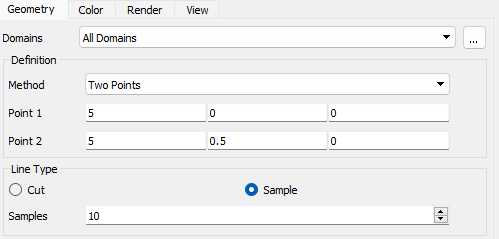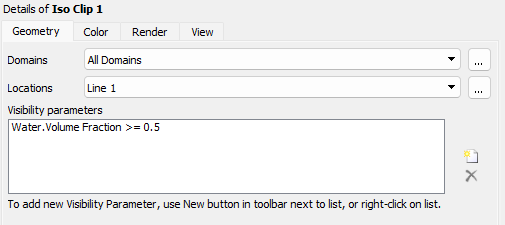-
-
November 19, 2024 at 9:52 am
s.m.mousavi
SubscriberDear Ansys Fluent Community,
I have been reading the Ansys Fluent Theory Manual regarding open-channel wave simulations. From what I understand, Ansys Fluent applies linear wave theories only (like shallow, intermediate, or shallow gravity). I would like to ask whether it is possible to simulate water wave conditions where wave breaking occurs, either offshore or nearshore.
Thank you in advance for your help!
-
November 19, 2024 at 10:08 am
Rob
Forum ModeratorYes, but if that exceeds the parameters of the wave models you may need to write your own boundary condition UDF. Also note when a wave breaks you also need to resolve spray etc so that's potentially a very expensive calculation with VOF.
-
November 22, 2024 at 11:58 am
s.m.mousavi
SubscriberThank you, Rob, for your reply. Could you please share a tutorial example (link) on open-channel wave propagation simulation in ANSYS Fluent? I would like to follow the tutorial to learn how to simulate regular waves in Fluent and then adapt it for my research purposes.
Thanks again!
-
November 22, 2024 at 12:55 pm
Rob
Forum ModeratorThe only tutorials I can share are in Fluent's Help or in Learning on here.
-
November 22, 2024 at 3:44 pm
s.m.mousavi
SubscriberI am trying to simulate the linear regular wave propagation (H=0.05 m and Wave length = 1.62 m) in a 2D open channel flow (0.5*10 m dimensions) with a fine mesh of 5mm*1cm in all the domain. I checked on the VOF; then the BCs are set as velocity inlet Open channel, Pressure outlet open channel, bottom as a wall, and free surface as pressure outlet. I can see the wave propagation only close to the inlet zone and the wave train is damped after something like one or a maximum of two wavelengths. Afterward, the free surface remains almost still (not completely). Why is it like this? Why can the generated waves not propagate through the domain to the outlet side?
What other settings or details should I provide here?Many thanks!
-
November 22, 2024 at 4:20 pm
Rob
Forum ModeratorYou may need a finer mesh given the wave height and length.
-
November 24, 2024 at 2:38 pm
s.m.mousavi
SubscriberI refined the mesh several times, however, the wave is not propagating through the domain. it gets damped very quickly within one or two wave length. Any other suggestions to resolve this issue?
Thanks!
-
November 26, 2024 at 3:00 pm
Rob
Forum ModeratorHow well converged is each time step? How do the results/movies look?
-
November 29, 2024 at 8:37 am
-
November 29, 2024 at 9:43 am
Rob
Forum ModeratorThat suggests the time step is too large, aim for 15-ish iterations per step.
-
November 29, 2024 at 3:38 pm
s.m.mousavi
SubscriberOk, I understand. I am decreasing my time steps. In the meantime, can you please guide me on how I can plot the water surface elevation over time in a specific location?
-
November 29, 2024 at 3:41 pm
Rob
Forum ModeratorHave a search for "depth" on here - you'll find it's been asked a few times.
-
November 29, 2024 at 3:56 pm
s.m.mousavi
SubscriberBefore I ask my question here, I have already searched around. However, I couldn't get my answer. If you don't mind, could you please direct me to a solution or a post that has been marked as resolved? I again searched for "depth" however I couldn't solve my problem.
Thank you! -
November 29, 2024 at 4:07 pm
Rob
Forum ModeratorFair - looks like we need to reveiw the search function again.
Very simply, in 2d create an isosurface of VOF at around 0.5 That'll give you a line. Plot the vertical position on the line.
In 3d create the isosurface to visualise the water free surface. Then create an isosurface of mesh that cuts the free surface whilst the free surface is selected. That will result in a "surface" that's actually a line of where the water level is on that vertical surface.
If you need the value at a position, create a vertical line and then a clip surface of that line based on VOF of (for example) 0.5 Plot the maximum (or minimum) of position on the clip line.
-
November 29, 2024 at 4:18 pm
s.m.mousavi
SubscriberSir,
Yes I need the surface position over time in my 2D domain at a specific location. OK, I tried to follow your steps:
1- I created a line say X=X0 from 0 to the height of my channel.2- Then I clicked on Insert >> Location >> Iso Clip. Then I chose:
3- Locations: Line 1 (that I defined previously). Visibility parameters: Water.Volume.Fraction >= 0.5.
Then I click ok. But I received this error: "No data exists for variable Water.volume fraction specified in object iso clip.
Am I doing something wrong?
-
November 29, 2024 at 4:20 pm
Rob
Forum ModeratorHas the solution been initialised? Ie is there a free surface?
-
November 29, 2024 at 4:26 pm
-
December 3, 2024 at 12:25 pm
Rob
Forum ModeratorI see you've opened another thread. Maybe try my suggestion in Fluent?
-
December 3, 2024 at 1:14 pm
s.m.mousavi
SubscriberYes I opened the new one, because I thought this thread topic was different to my latest question. Anyhow, I could obtain the water surface by some sort of integrating processes. Should I close the new thread that I have opened? If yes, how?
Thank you, Rob for all your help and assistance, GRAZIE! -
December 3, 2024 at 2:37 pm
Rob
Forum ModeratorJust link this thread in that one.
-
- You must be logged in to reply to this topic.


- JACOBI Convergence Issue in ANSYS AQWA
- Is it able to solve turbomachinery using density-based solver in Fluent?
- Two-way FSI simulation
- Ensight Force_per_unit area_EV
- RIBBON WINDOW DISAPPEARED
- Fluent Meshing Error when .dsco not .stp
- Ansys Fluent for modelling Ocean Wave reactions to Wave Barriers
- Battery Pack cooling
- ISAT ABORT error
- UNASSIGNED INTERFACE ZONE DETECTED FOR INTERFACE…

-
4597
-
1495
-
1386
-
1209
-
1021

© 2025 Copyright ANSYS, Inc. All rights reserved.












